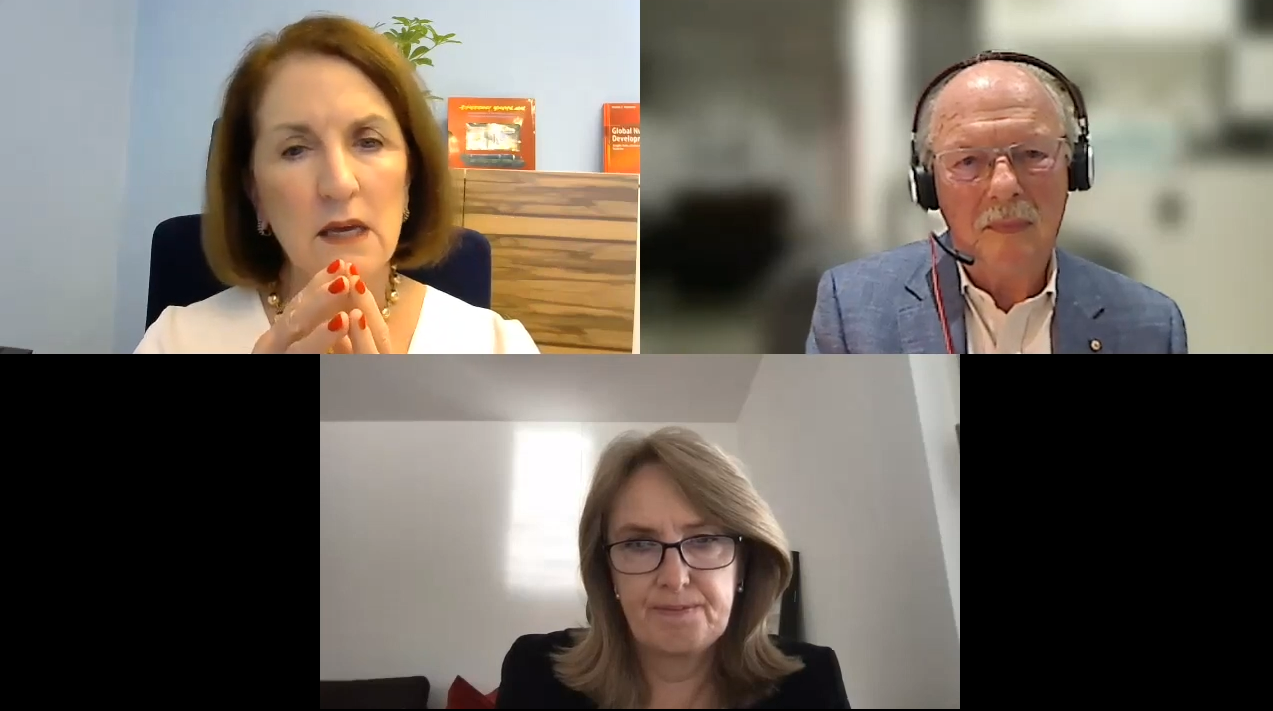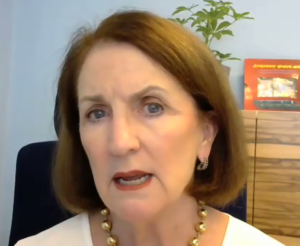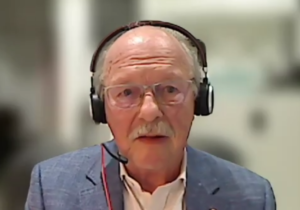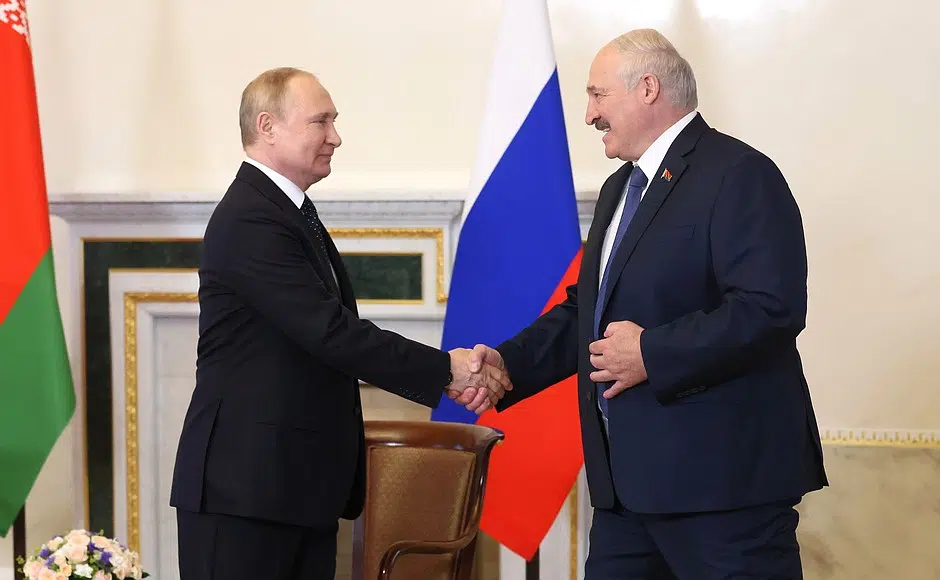
On 15 September 2021, the governments of Australia, the United Kingdom and the United States announced the creation of an “enhanced trilateral security partnership” between the three countries, entitled AUKUS. The partnership inter alia entails the provision of a conventionally-armed, nuclear-powered submarine fleet to Australia. Following this announcement, international experts have raised questions about nuclear naval propulsion in the context of the global non-proliferation regime and in particular IAEA safeguards under comprehensive safeguards agreements concluded pursuant to the Treaty on the Non-Proliferation of Nuclear Weapons (NPT).
Responding to these questions, the VCDNP held a webinar on 15 October 2021 with renowned safeguards experts Laura Rockwood (Director, Open Nuclear Network) and John Carlson (Non-Resident Senior Fellow, VCDNP) to discuss the implications of a naval nuclear propulsion programme on the application of the nuclear safeguards implemented by the International Atomic Energy Agency (IAEA).
The discussion was chaired by VCDNP Executive Director Elena K. Sokova. In her opening remarks, Ms. Sokova noted that the provision of nuclear-powered submarines under the AUKUS partnership would set a safeguards precedent for other non-nuclear-weapon State (NNWS) parties under the NPT that may wish to establish their own nuclear-powered submarine programmes in the future.

To help participants understand the debate around submarines and safeguards, Ms. Rockwood began with an overview of related legal provisions. Paragraph 14 of INFCIRC/153, the basis of all comprehensive safeguards agreements for NNWSs under the NPT, describes the procedures that countries are required to follow if they wish to use nuclear material which is required to be safeguarded for a nuclear activity which does not require safeguards. Ms. Rockwood explained that this provision relates to nuclear naval propulsion, and in order to invoke it, the country concerned must: inform the IAEA; assure the IAEA that the activity will not result in the production of nuclear weapons; and conclude a specific arrangement for the non-application of safeguards while the nuclear material is used in that activity.

Ms. Rockwood discussed several key questions surrounding the invocation of paragraph 14 for the non-application of safeguards.
Board Approval. Would the arrangements under paragraph 14 be subject to the approval of the IAEA’s Board of Governors? Ms. Rockwood noted that paragraph 14 was on its face was ambiguous, as it did not include language specifically requiring Board approval, but rather spoke of the IAEA and the State agreeing on the arrangement. In her view, if presented to the Board by the Director General, the Board could decide that its approval is necessary. Ms. Rockwood said that there are pros and cons to each approach, which she elaborates on in a 2017 piece on nuclear naval propulsion and IAEA safeguards published by the Federation of American Scientists.
Paragraph 14 Arrangements. Ms. Rockwood discussed what the content of the arrangement between the IAEA and the State would be, noting that, among other requirements, the State would need to keep the IAEA informed of the total quantity and composition of the material removed from safeguards. She also said that the period of time the nuclear material is removed from safeguards would need to be as short as possible.
Safeguards Conclusions. An additional protocol (AP) provides the IAEA with broader access to information and locations In a State with a comprehensive safeguards agreement. These tools assist the IAEA in determining that all nuclear material in the State remains in peaceful activities – the so-called “broader conclusion.” Clearly, the conclusion of an AP by the State would likewise contribute to the IAEA’s ability to assure that nuclear material used for submarine fuel is not diverted for weapons purposes. However, Ms. Rockwood raised the question as to whether some provisions of the country’s AP would be suspended under a paragraph 14 arrangement. If that were the case, would the IAEA still be able to draw such a conclusion, or would that safeguards conclusion need to be reformulated? The answers to these questions are outstanding.
Military-to-Military Transfer. The most critical issue raised by the provision of nuclear-powered submarines to a NNWS is the prospect that a State might attempt to argue that it would not need to conclude paragraph 14 arrangements for a military-to-military transfer of nuclear material for a submarine programme. Ms. Rockwood responded to this issue with a resounding no – there is no automatic exclusion from safeguards from nuclear material simply because it was already in, or produced for use in, a military activity.
In conclusion, Ms. Rockwood said that while “some will argue that Australia’s non-proliferation credentials should allow for greater flexibility, it is clear that any arrangement agreed to will inevitably be invoked as a precedent for other States. To that end, whatever the arrangement, it must be designed as fit for purpose regardless of who the partner States might be. Just change the names of the parties involved and see if it you’re still happy with it.”
In his remarks, Mr. Carlson brought further perspective on what the perceived and actual risks are posed by a NNWS with access to nuclear naval propulsion. His conclusion was the “paragraph 14 loophole” is not as wide as some may think. He reiterated Ms. Rockwood’s point that the non-application of safeguards should be as limited as practicable, and elaborated that all processes outside the actual use of the relevant nuclear material in the submarine, including enrichment, fuel fabrication, storage, transportation, reprocessing and disposal, must be under full safeguards.

Importantly, he also noted that, under the AUKUS partnership, Australia is envisioned to receive submarines with the nuclear reactor already loaded with fuel and sealed into the hull of the submarine. In this case, neither Australia nor any other party would have access to the nuclear material. The only way to access the material would be to cut into the hull, which would take the submarine out of service for a notable period of time and be readily apparent to the IAEA, especially using the additional measures available to it under Australia’s AP. He reminded that Australian officials are cognizant of the precedent being set by these events and are determined to set a positive precedent.
Mr. Carlson noted some important considerations in ensuring that nuclear material used for nuclear naval propulsion is not diverted for weapons development. Scenarios for the diversion of fuel from submarines were mostly unlikely, but must be covered appropriately. It is a question of what is realistic and adequate. This is discussed in more detail in a recent brief authored by Mr. Carlson.
Verification of Material Covered under Paragraph 14. Mr Carlson noted the primary responsibility of both the State and the IAEA is to demonstrate that the prohibition against the diversion of nuclear material to nuclear weapons is being met. A minimalist interpretation of paragraph 14 is unlikely to suffice. There are verification activities that could be included which should be acceptable to a State under a paragraph 14 arrangement, such as the provision of nuclear material accountancy information that does not compromise classified military information or the use of neutron detectors and other technical measures to verify the presence of fuel in the core of the reactor.
Understanding the Risk. Mr. Carlson noted that it was helpful in assessing the non-proliferation risks of a nuclear naval propulsion programme to understand the fuel-cycle-related processes that contribute to naval fuel. He suggested that the greatest potential for proliferation is where a State has nuclear fuel cycle activities, particularly enrichment, in support of this programme. In the case of Australia the risk is minimal, as the reactors will be loaded and sealed in the hull before supply to Australia, Australia will have no access to the highly enriched uranium (HEU) fuel used in the reactor, and does not itself possess an enrichment capability.
Mr. Carlson noted that the discussions surrounding the AUKUS submarine deal raised a number of more far-reaching questions in the nuclear non-proliferation regime. One notable question is the need for universalisation of APs, the minimisation of activities using HEU and the priority that should be placed on the return to discussions on a future Fissile Material Cut-Off Treaty (FMCT).
He expressed the view that any country wishing to conclude a paragraph 14 arrangement with the IAEA should be prepared to conclude an AP with the IAEA as a prerequisite. This would provide additional assurance to other States that, while in a legally permitted military use, the nuclear material for nuclear naval propulsion was not at risk for diversion for nuclear weaponsuse. As concerns HEU and an FMCT, Mr. Carlson said that use of HEU for naval propulsion has the merit of consuming existing stocks of HEU, but that there should be no further production of this material. Progress on the negotiation of an FMCT would be a meaningful step in decreasing risks from nuclear naval propulsion and increasing the strength of the nuclear non-proliferation regime overall.
The full recording of the webinar is included below.

